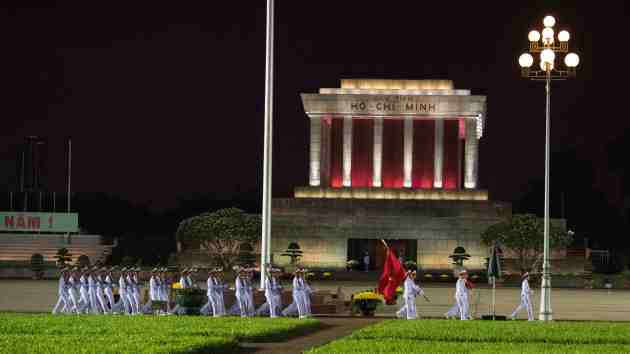The making of my beautiful Lao Carpet – part 2.
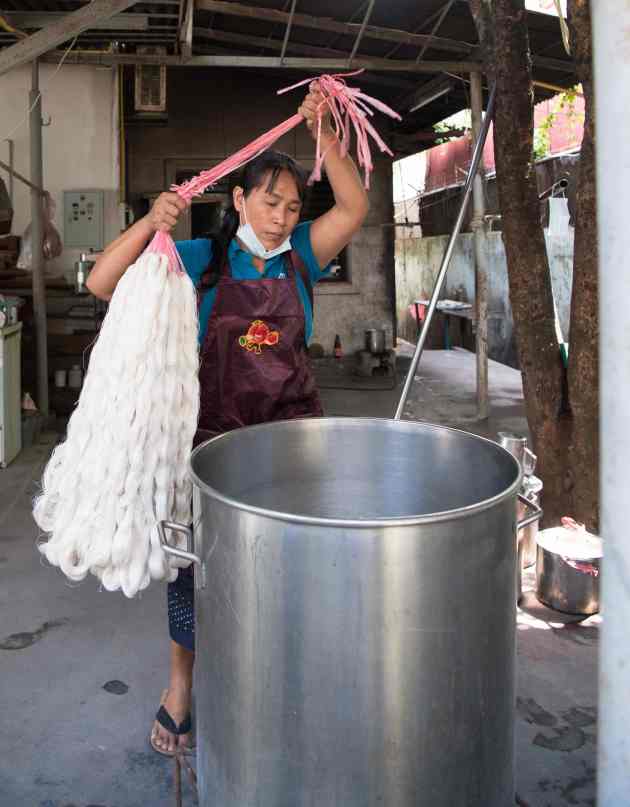
Tan is ready to boil the first batch of yarn for my carpet.
It is a stifling hot morning in Vientiane, as I come back to Magic Lao Carpet. The worms have delivered their cocoons with about 200 meters of thin silk thread in each cocoon. Today, I will explore the next steps the elaborate techniques in making my carpet.
Tan and Tuk is hanging up somebody else’s yarn, dyed in a dazzling yellow color, called Tuscany. Tan has been working with silk processing for more than 20 years, she tells me.
After all the dyed yarn is hung up to dry in the sun, Tan turns to a batch of raw silk – the first two kilos for my carpet. Magic Lao Carpet co-owner Lani explains the procedures to remove the sticky glue-like substance left by the worms:
“First, to do the degumming we boil the yarn with lye from the rice straw ashes to make it shiny and soft. This takes about 30 minutes at 80-90c. When the yarn has dried up, we wash it one more time with iron sulfate in the water to remove all the glue. The process is relatively easy but takes time and lots of water – about 60 liters per 2 kilos of yarn,” Lani says.
After the second boiling the yarn is rinsed with a hose, followed by thorough scrubbing in big plastic jars filled with clean cold water. After the last scrubbing, the water is still sufficiently clean to be used for watering Lani’s garden.
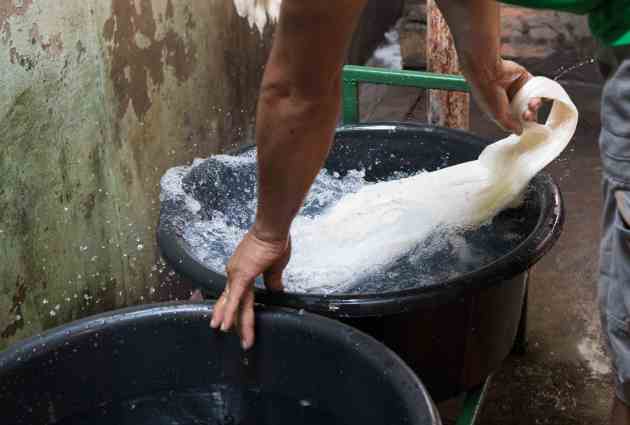
Rinse, rinse, rinse and then rinse some more.
The ambassador drops in
While following the procedures, I meet other people who are taking an interest in Magic Lao Carpets. The Canadian ambassador to Thailand and Laos, Ms. Donica Pottie, drops in to see, what they can do in the little workshop. The ambassador notes with obvious recognition that Magic Lao Carpets is very much a social enterprise, offering training and jobs to disadvantaged Lao youth.
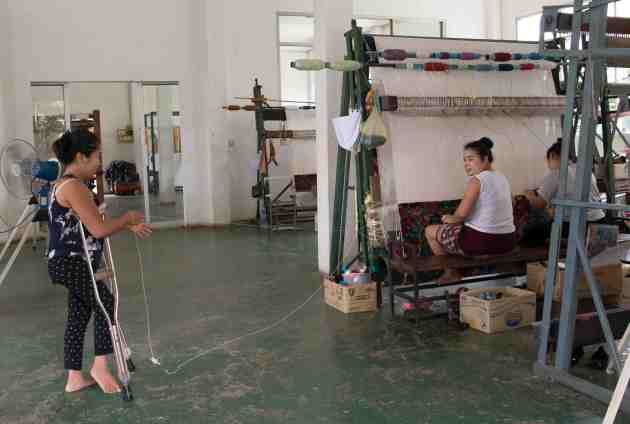
Magic Lao Carpets – a social enterprise.
A designer from the UK, Ms. Sophie Wright, joins us this morning to study the yarn processing and dyeing. She is impressed with the technical skills of the staff.
After half an hour in the sweltering heat of the courtyard, we all enjoy delicious ice-tea, made by mulberry leaves from the worm farm of Magic Lao Carpets an hour’s drive from the workshop.
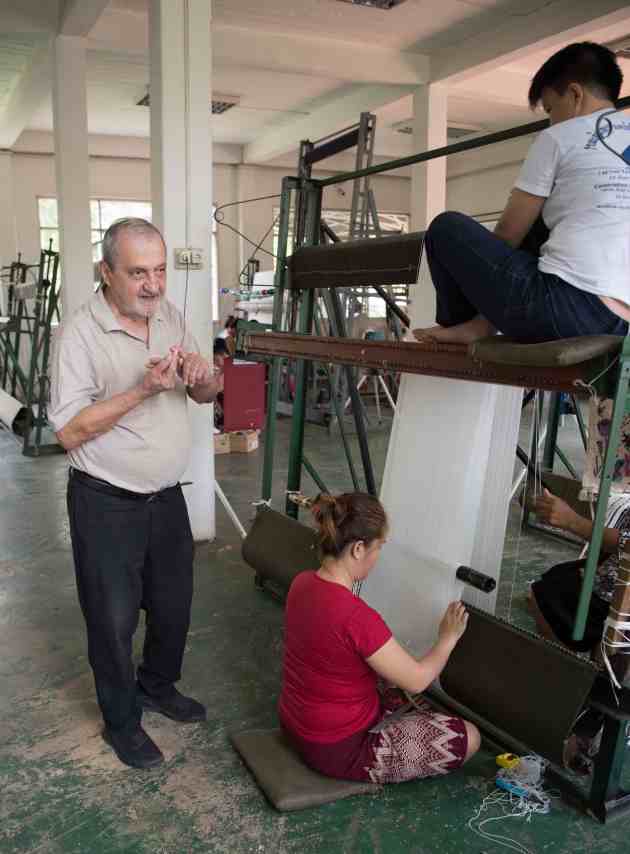
Ismit brought the carpet making craft from Turkmenistan, when he arrived in Laos more than 20 years ago.
The craft of Turkmenistan
Lani’s husband, Ismit takes me to the workshop to show me how the weavers are preparing to set up the ‘skeleton’ of my carpet – soft and very strong white cotton string, imported from Thailand. Ismit tells me that Magic Lao Carpet build their own looms based on local materials.
Ismit is a native from Turkmenistan, famous for producing handmade carpets for more than 4.000 years. He brought the technique with him to Laos more than twenty years ago.
It does not take long for my yarn to dry in the hot Lao summer sun.
Stay tuned for the next part: The secrets of the dyeing process.
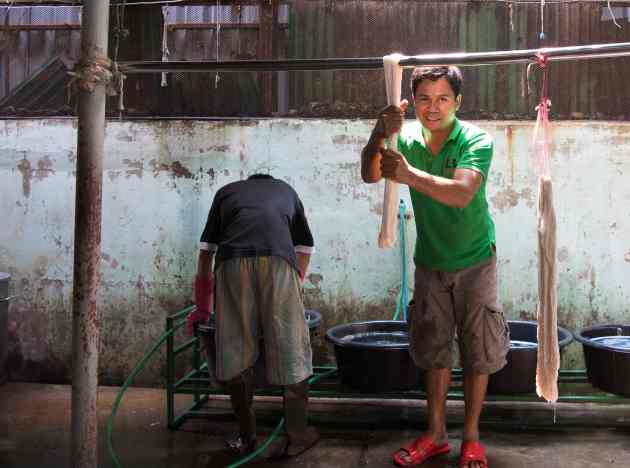
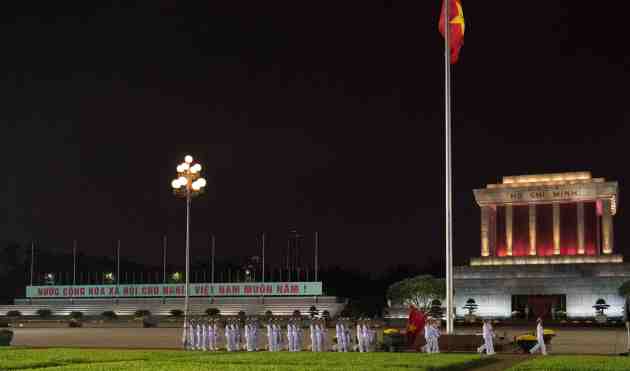 On the eve of the 30 April celebrations, I went to record the flag ceremony at Hanoi’s Ba Dinh Square. The square is named after the first three communes, who rebelled against the French.
On the eve of the 30 April celebrations, I went to record the flag ceremony at Hanoi’s Ba Dinh Square. The square is named after the first three communes, who rebelled against the French.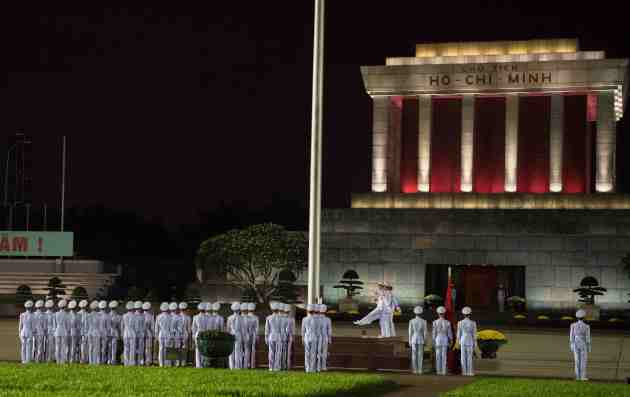 Three soldiers will then approach the pole and lower the flag.
Three soldiers will then approach the pole and lower the flag.